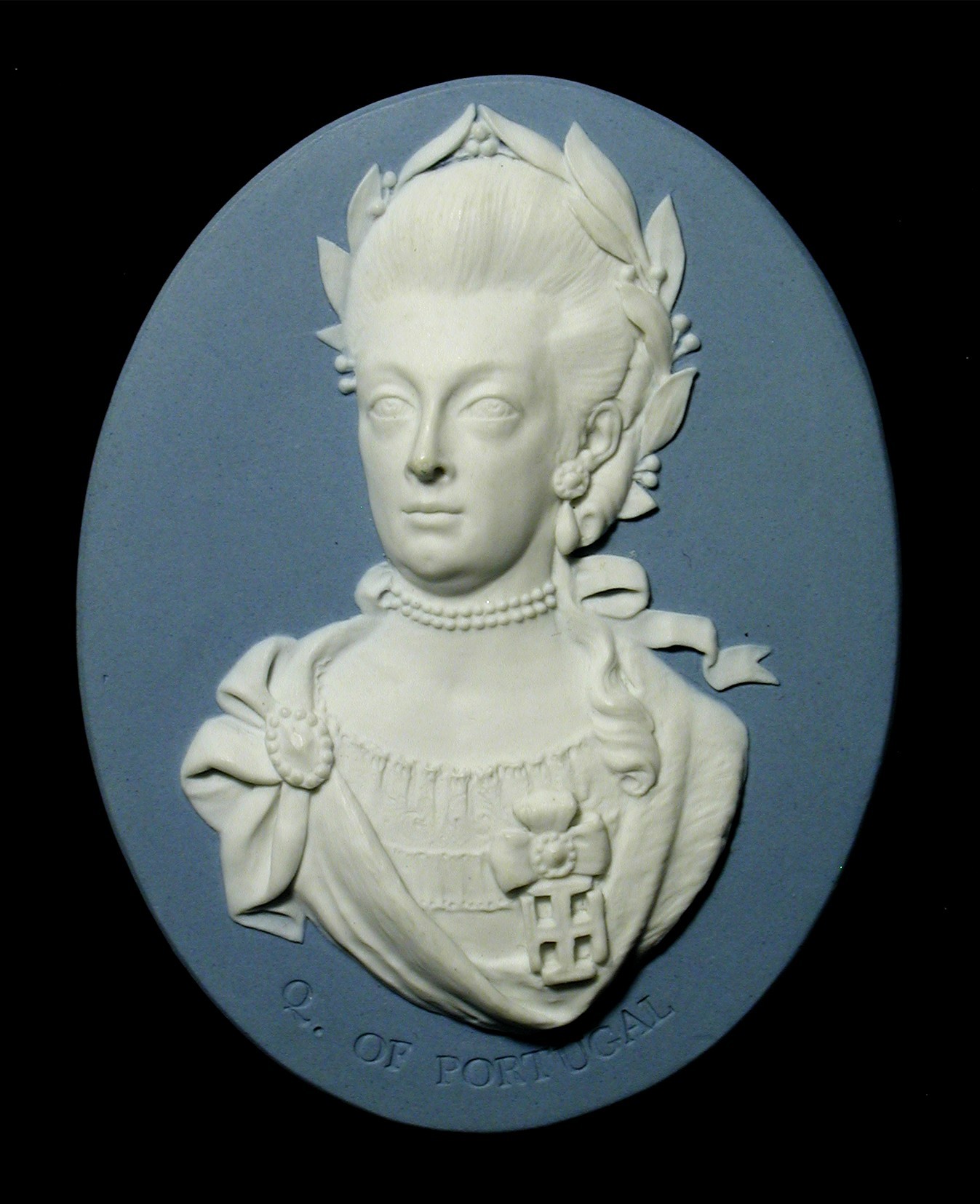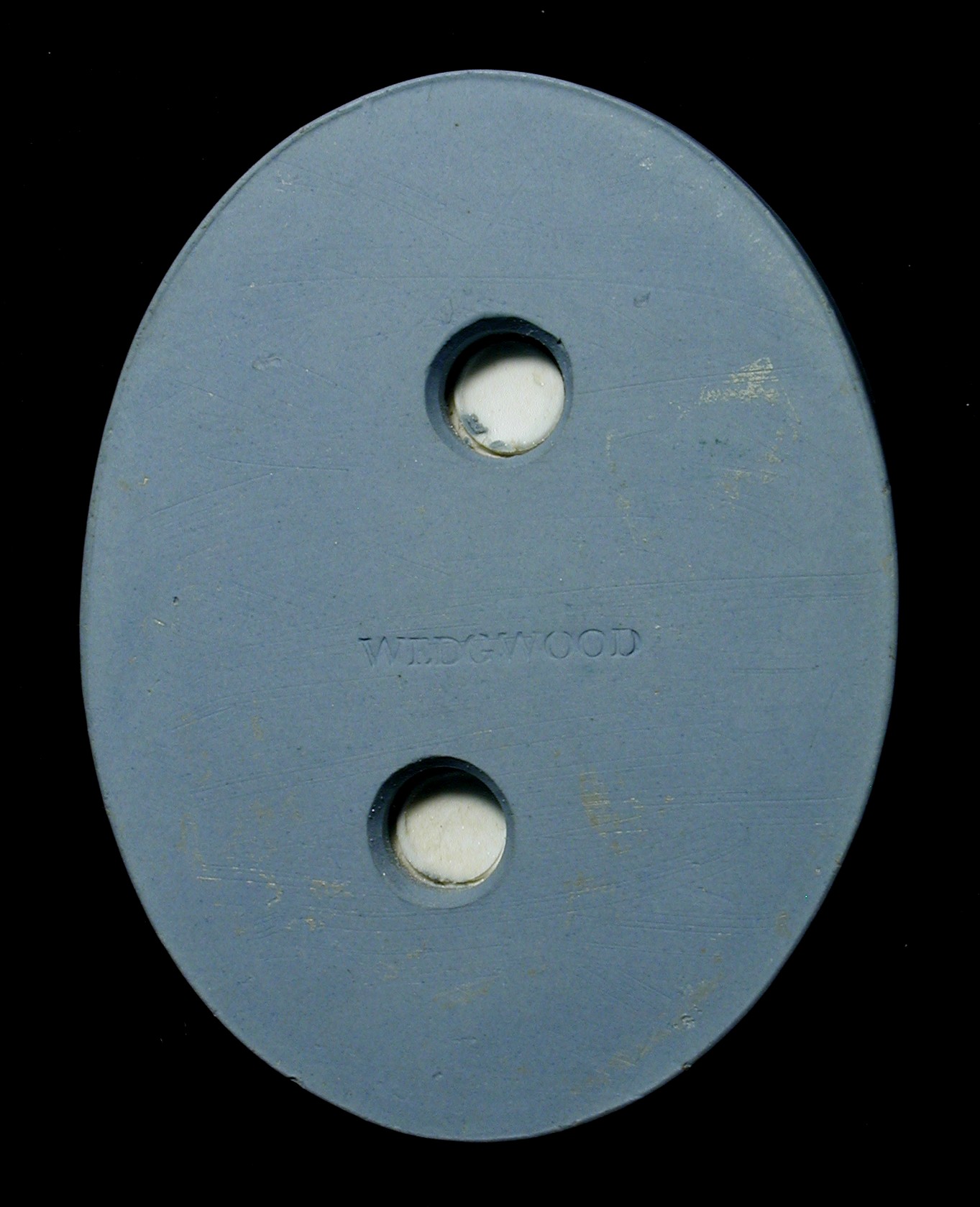

Historical and
Commemorative Medals
Collection of Benjamin Weiss


|
MARIA I, QUEEN OF PORTUGAL Flaxman, John: Portugal, c.1782, Wedgwood Jaspar
Porcelain, 99 x 78 mm Obv: Bust of Maria I (facing) Q. OF PORTUGAL The portrait medallion was made by John Flaxman after the cameo of 1782 by Figueiredo. Maria I (English: Mary I) (17 December 1734 20 March 1816) was Queen of Portugal, Brazil, and the Algarves. Known as Maria the Pious (in Portugal), or Maria the Mad (in Brazil), she was the first undisputed Queen regnant of Portugal. Her reign would be a noteworthy one. With Napoleon's European conquests, her court, then under the direction of Prince Dom Joćo, the Prince Regent, moved to the then Portuguese colony of Brazil. Later on, Brazil would be elevated from the rank of a colony to that of a Kingdom, the Kingdom of Brazil, with the consequential formation of the United Kingdom of Portugal, Brazil and the Algarves. Maria would grow up in a time when her father's government and country were dominated completely by the first Marquis of Pombal. Her father would often retire to the Queluz National Palace which was later given to Maria and her husband. The Marquis took control of the government after the terrible 1755 Lisbon earthquake of 1755, in which around 100,000 people lost their lives; the palace of her birth was also destroyed in the disaster. After the earthquake, her father was often uncomfortable at the thought of staying in enclosed spaces and later had claustrophobia. The king later had a palace built in Ajuda, away from the city centre. This palace became known as Real Barraca de Ajuda (Royal Complex at Ajuda) because it was made of wood. The family would spend much time at the large palace and it was the birthplace of Maria's first child. In 1794 the palace burned to the ground and Ajuda National Palace was built in its place. In 1760 Maria married her uncle Pedro, younger brother of her father Jose I. They had six children, of whom the eldest surviving son succeeded Maria as Joćo VI on her death in 1816. Incapacitated, Maria lived in Brazil for eight years, always in an unhappy state. In 1816, the Queen died at the Carmo Convent in Rio de Janeiro at the age of 81. After her death, Prince Regent Joćo was acclaimed the King of Portugal, Brazil, and the Algarves and had her body was returned to Lisbon, and interned in a mausoleum in the Estrela Basilica (Portuguese: Basilica da Estrela), that she had helped found. Maria is a greatly admired figure in both Brazil in Portugal, due to the tremendous changes and events that took place during her reign. In Portugal, she is celebrated as a strong female figure. Her legacy shines at Portugal's Queluz National Palace, a baroque-roccoco masterpiece that she helped conceive. A large statue of her stands in front of the palace, and a pousada near the palace is named in her honor. A large marble statue of the Queen was erected at the Portuguese National Library in Lisbon, by the students of Joaquim Machado de Castro. In Brazil, she is admired as a key figure in the eventual independence of Brazil. It is during her reign, though acted through her son's regency, that many of the institutions and organizations in Brazil were created. These institutions were the precursors to their modern day equivalents and granted large degree of power to the Brazilian colonials. While she is often called A Louca (the Crazy) in Brazil, Brazilian and Portuguese historic scholars hold her in high esteem. (Taken, in part, from wikipedia: http://en.wikipedia.org/wiki/Maria_I_of_Portugal)
|
|